When considering early orthodontic treatment for your child, you may come across a variety of approaches, each claiming to offer the best results. One such approach is the ALF (Advanced Lightwire Functional) appliance, which is marketed as a gentle and holistic way to expand the upper and lower jaw while improving oral posture, breathing, and overall health.
ALF providers often claim that the appliance can help with:
✅ Jaw expansion without forceful pressure
✅ Tongue positioning and myofunctional training
✅ Airway improvement and better nasal breathing
✅ Avoiding traditional palatal expanders
This sounds great, right? But here’s the thing: If the ALF appliance doesn’t actually widen the jaw bone, it can push the teeth out in a weird way. This can lead to problems like crooked teeth coming back, sore jaws, and even trouble with your gums later on. That’s why it’s important to know the difference between just moving teeth and actually changing the jaw bone. In our experience, we’ve seen these problems happen time and time again after patients have used the ALF appliance. In this article,see actual cases that show the unintended consequences of using an ALF appliance, learn about alternatives to ALF appliances and how we achieve true skeletal expansion orthodontics.
What We’ve Seen in Our Practice After ALF Treatment
Over the years, we’ve had numerous patients come to us after using ALF—sometimes for several years—without achieving the promised results. While every case is unique, we’ve observed several consistent trends that parents should be aware of. Understanding the difference between skeletal expansion vs dental flaring is crucial for effective orthodontic treatment.
Case 1: 12-Year-Old Boy After ALF Treatment
This patient had used the ALF appliance for multiple years. However, when he arrived at our office, he was frustrated with the appearance of his teeth, feeling they stuck out too far. He also experienced discomfort when chewing and a general feeling that his bite was off, prompting him to seek a second opinion.
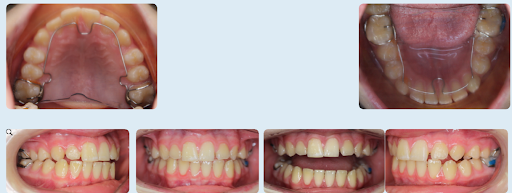
This patient had used the ALF appliance for multiple years. However, when he arrived at our office, he was frustrated with the appearance of his teeth, feeling they stuck out too far. He also experienced discomfort when chewing and a general feeling that his bite was off, prompting him to seek a second opinion.
Here’s what we found:
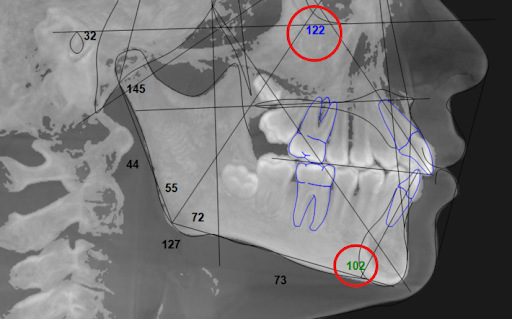
Flared front teeth
The boy’s incisors had been pushed forward, making it look like there was expansion when in reality, his teeth were simply tipped outward. (Exhibit A: Any number that is not black is out of the norm. In this case both the upper and lower incisors were out of the norm for him because they were both flared out considerably)
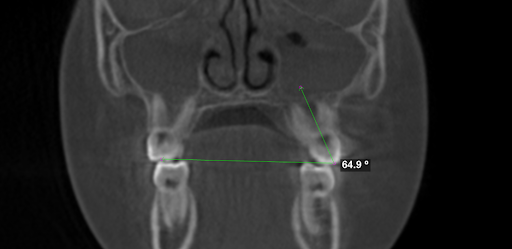
Severely tipped out teeth
His molars were leaning outward at a 65-degree angle, when we ideally want them closer to 90 degrees for proper stability and interdigitation of the upper and lower teeth.
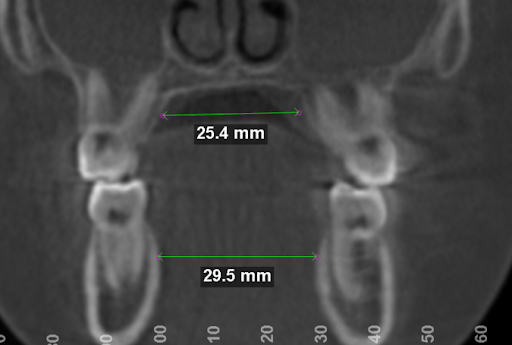
No true skeletal expansion
When we measured his upper and lower jaw widths using our 3D CBCT scan, we found that his upper jaw was still too narrow in relation to his lower jaw. The ALF had not created real orthopedic change, despite years of use.
*Please notice our advanced evaluation of this case shown in these few photos – we do not rely just on looking in the mouth or flat, panoramic x-rays as these assessments alone do not show the full scope of the situation. 3D x-rays and advanced technology is needed along with the doctors vast experience to truly treat the problems this ALF appliance has caused.
Case 2: 15-Year-Old Girl with TMJ Pain After ALF
This patient had previously undergone ALF treatment and Invisalign with another provider, but by the time she reached our office, she was experiencing severe TMJ pain. She sought our help because she was experiencing constant, debilitating jaw pain, especially when chewing or opening her mouth wide. She also noticed clicking and popping in her jaw joint and felt her bite was uneven and uncomfortable. She felt disheartened that after years of orthodontic work, she was still experiencing such significant problems.
Upon analysis, we found:
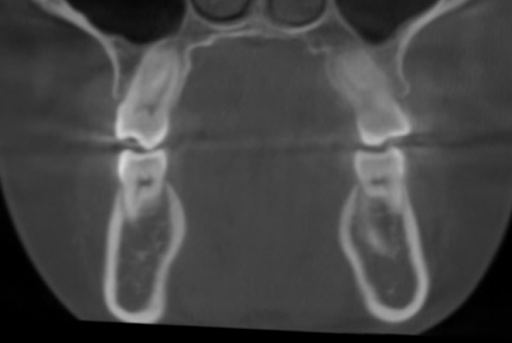
Tipped molars and an unstable bite
Her upper molars had tipped outward due to ALF, disrupting the balance of her bite.
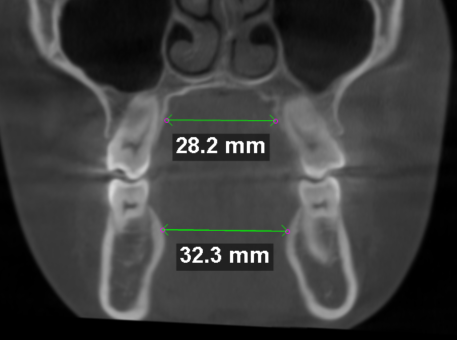
Skeletal discrepancy remained
Her 3D scan showed that, despite ALF use, her upper jaw had not expanded sufficiently to match her lower jaw.
TMJ dysfunction
The instability in her bite was a major factor in her jaw pain, something that could have been prevented with proper orthopedic expansion.
These cases illustrate a common issue with ALF treatment: instead of truly expanding the jaws, it often causes dental flaring and tipping while leaving the underlying skeletal problem unresolved.
What About Biobloc Orthotropics?
Another treatment people consider holistic orthodontics is Biobloc Orthotropics. It’s another approach some orthodontists use to try and guide jaw growth. Like the ALF appliance, Biobloc Orthotropics aims to improve jaw development, breathing, and overall facial balance. It often involves using removable appliances that are adjusted over time.
While the goals sound good, we’ve noticed some similar patterns with patients who’ve used Biobloc Orthotropics, just like with the ALF appliance. We’ve seen kids come to our office after Biobloc treatment with teeth that have been tipped outward instead of true jaw expansion. This can lead to the same problems we discussed earlier, like unstable bites, jaw pain, and teeth that don’t line up correctly.
Just like with the ALF, the key issue is whether the treatment is actually changing the jaw bone or just moving the teeth. If the bone isn’t growing correctly, problems can arise.
We understand that parents want the best for their children and are looking for methods that promote natural growth. However, it’s essential to ensure that the chosen method is based on solid science and delivers predictable, measurable results.
Why True Skeletal Expansion Matters (And How We Achieve It Correctly)
If a child’s top and bottom jaws don’t line up right, we need to make the top jaw wider by growing the bone, not just tilting the teeth. This mismatch in width between the upper and lower jaw is called a transverse discrepancy. Achieving real skeletal expansion is essential for:
✅ Airway & Breathing Improvement – The floor of the nose shares a border with the roof of the mouth, so expanding the palate increases nasal airway space, making it easier to breathe through the nose. This is particularly important for preventing mouth breathing and long-face syndrome.
✅ Proper Tongue Space – A well-developed upper jaw creates the necessary space for the tongue to rest in its ideal position, which plays a major role in breathing, speech, and eating.
✅ Preventing Long-Term Damage – If “expansion” is achieved only by flaring the teeth outward (as ALF often does), the teeth can be pushed out of the bone, leading to gum recession, instability, and long-term bite problems. In contrast, real skeletal expansion actually builds new bone, creating a stable and lasting improvement.
So how does Dr. Chantal Hakim ensure real skeletal expansion?
🔬 Objective 3D CBCT Analysis
Unlike some orthodontists, who often rely on visual assessments, our practice uses CBCT scan orthodontics to ensure accurate diagnosis and treatment planning for orthopedic jaw expansion Los Angeles. Advanced CBCT imaging enables us to accurately and objectively measure the width of the upper and lower jaw allowing us to:
- Determine if expansion is needed (instead of assuming).
- Measure the exact amount of expansion required—We typically aim for the upper jaw to be 2mm wider than the lower jaw to ensure a proper skeletal relationship.
- Confirm that true expansion (not just dental tipping) is taking place.
🦷 Precision-Oriented Treatment
Instead of using light forces to “guide” the teeth outward, we use scientifically backed orthopedic appliances that directly stimulate bone growth, achieving measurable, stable but gentle skeletal change.
🩺 Comprehensive, Whole-Health Approach
We take the time to evaluate every factor affecting a child’s development, including:
- Sleep & breathing habits
- School performance & focus
- Jaw joint health & posture
- Overall facial growth patterns
This allows us to treat the whole child, not just shift their teeth around in a way that looks good temporarily but fails in the long run.
Making the Right Choice for Your Child
We know you want what’s best for your child. While the ALF appliance sounds gentle and natural/holistic, evidence is showing over and over again that it often doesn’t actually fix the jaw bone problem. Instead, kids can end up with teeth that stick out, tilted molars, jaws that still don’t line up, and even jaw pain. These issues usually need more treatment (at an additional cost) to fix.
We do things differently. If your child needs jaw expansion, we make sure it’s done correctly the first time – actually changing the bone, leading to better health in the long run.
So, when you’re thinking about early orthodontic treatment, look for a plan that’s based on real science and measures actual bone changes, not just moving teeth around. We’re proud to focus on early orthodontic treatment in Los Angeles with a whole-health approach.
Why Orthospaceship & Dr. Hakim are Your Best Choice
Dr. Hakim and the team at the Orthodpaceship use advanced technology like 3D scans to see exactly what’s going on with your child’s jaws. We don’t guess – we measure! This means we can create a personalized plan that will lead to the best results. Whether you’re worried about ALF appliance problems, need help with TMJ pain, or want to make sure your child gets the right treatment from the start, we’ve got you covered.
We know how important it is to get it right the first time. If you or your child has experienced ALF appliance side effects, like dental flaring or jaw pain, or if you’re looking for a better approach to jaw expansion, we can help. We specialize in fixing jaw discrepancies and correcting tipped molars.
Ready to see how we can help your child achieve a healthy, confident smile? Schedule a free consultation with Dr. Hakim today! Call our office and let’s talk about your child’s orthodontic needs.
